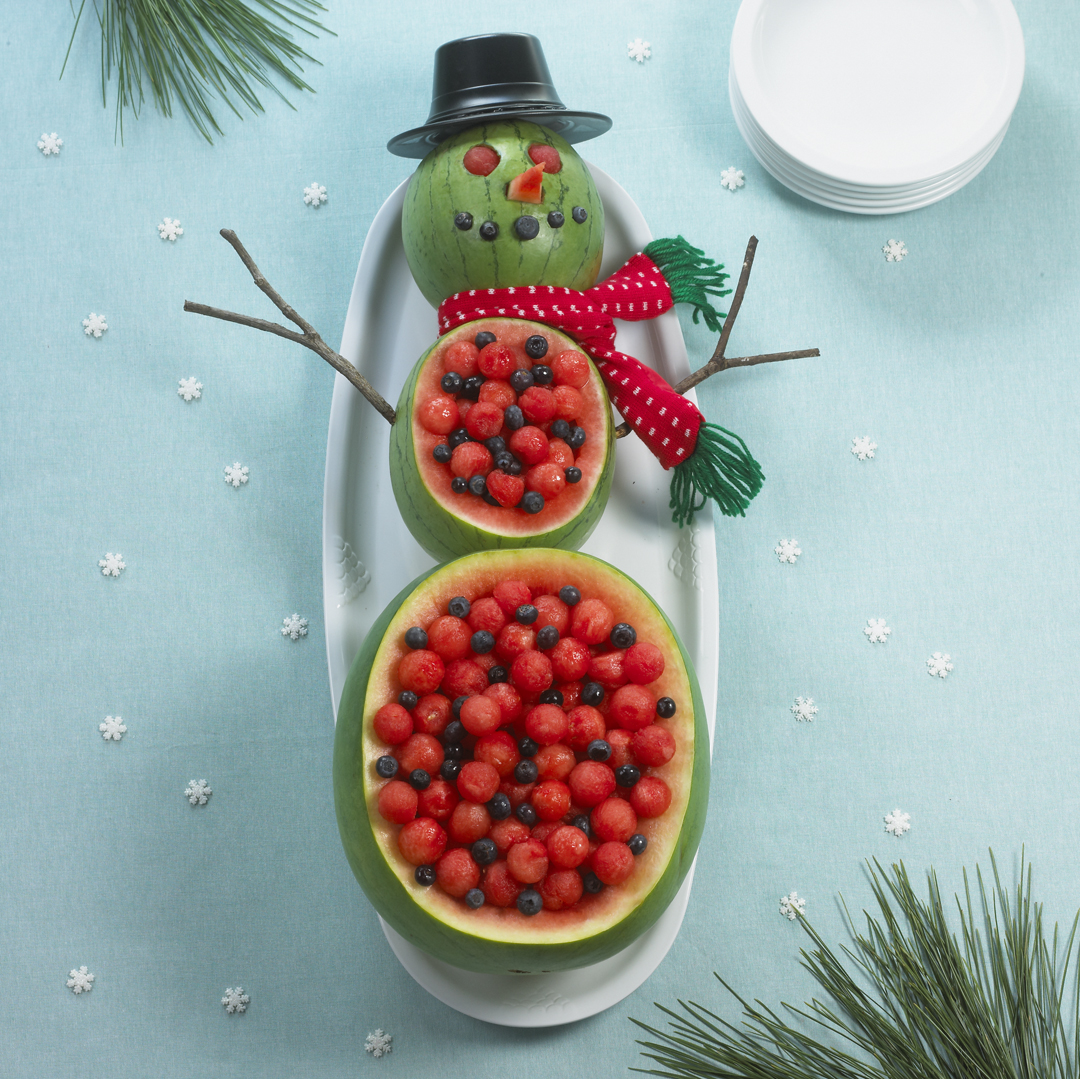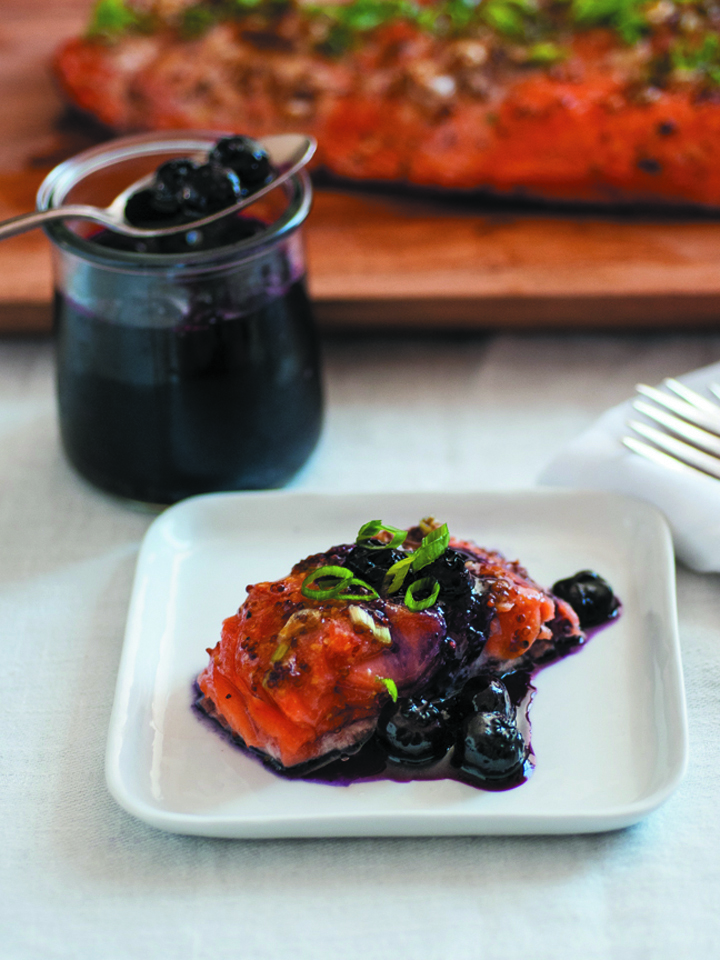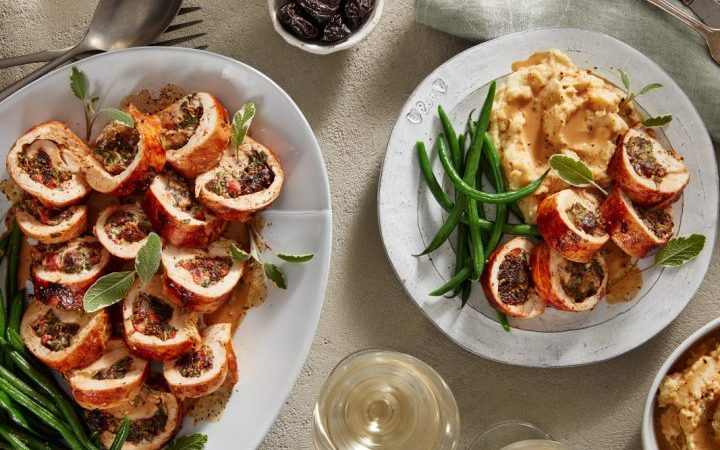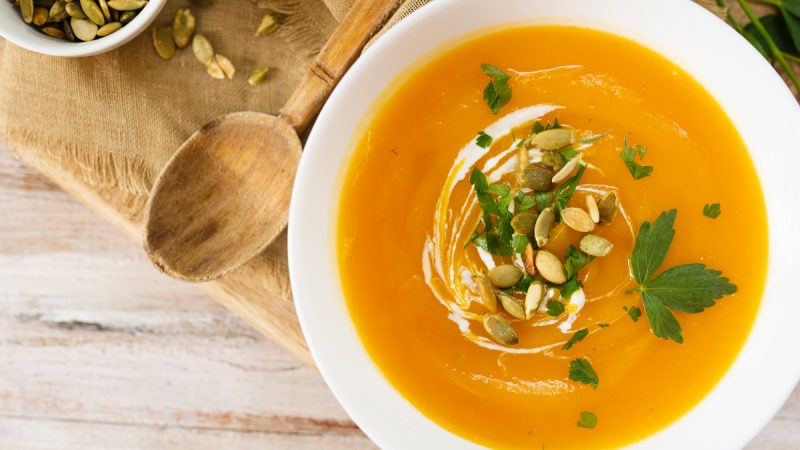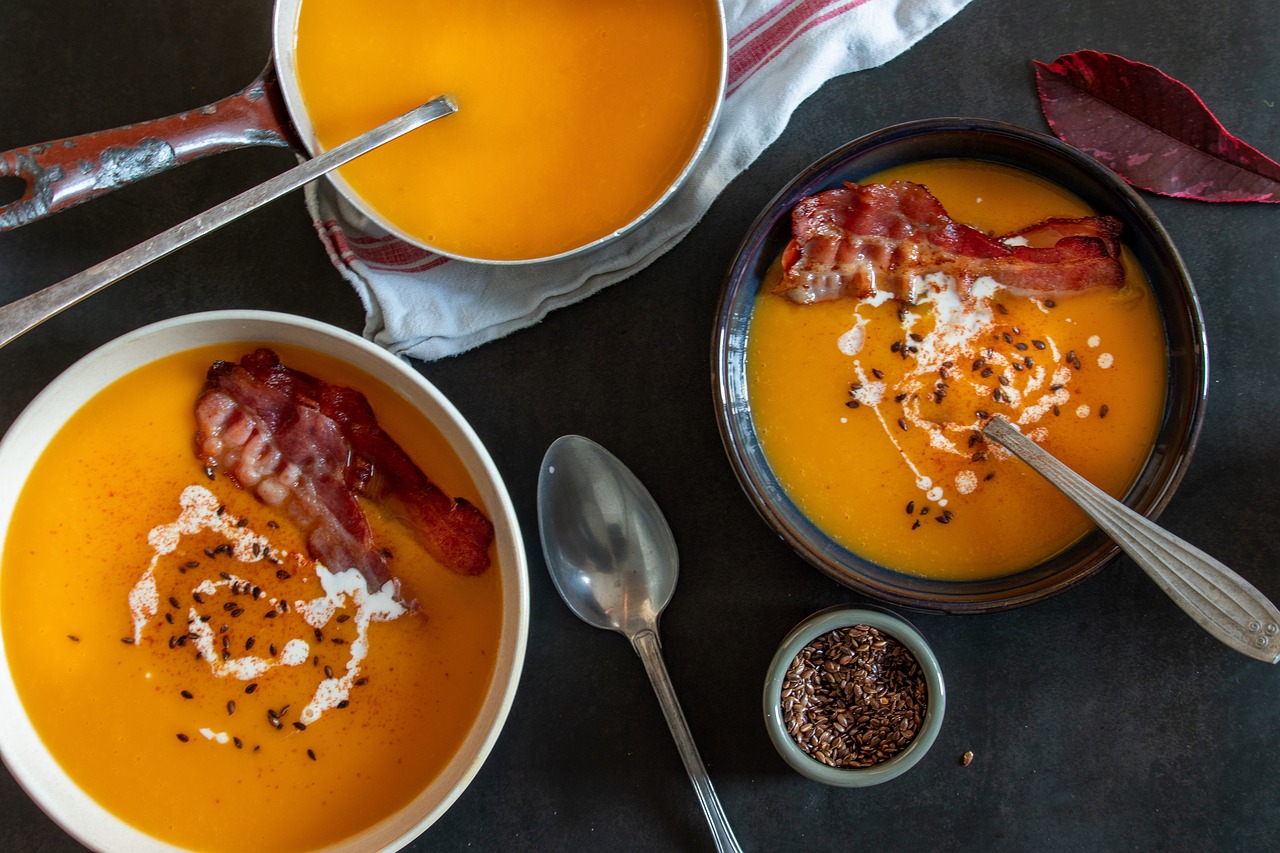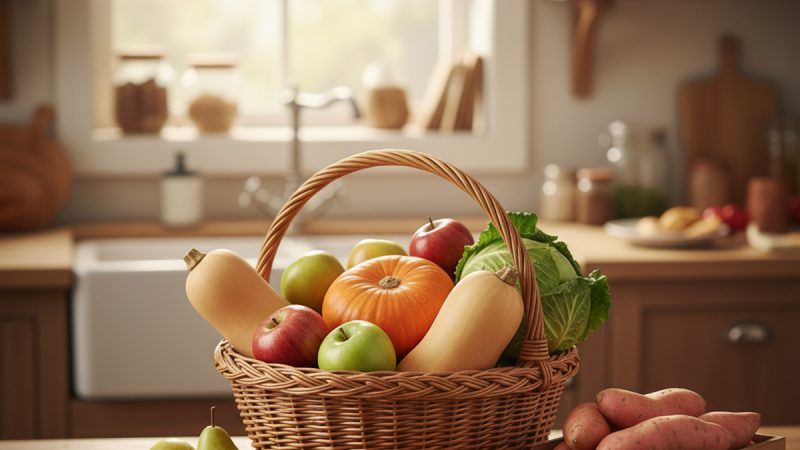Homemade Chicken, Turkey, Duck or Goose Stuffing
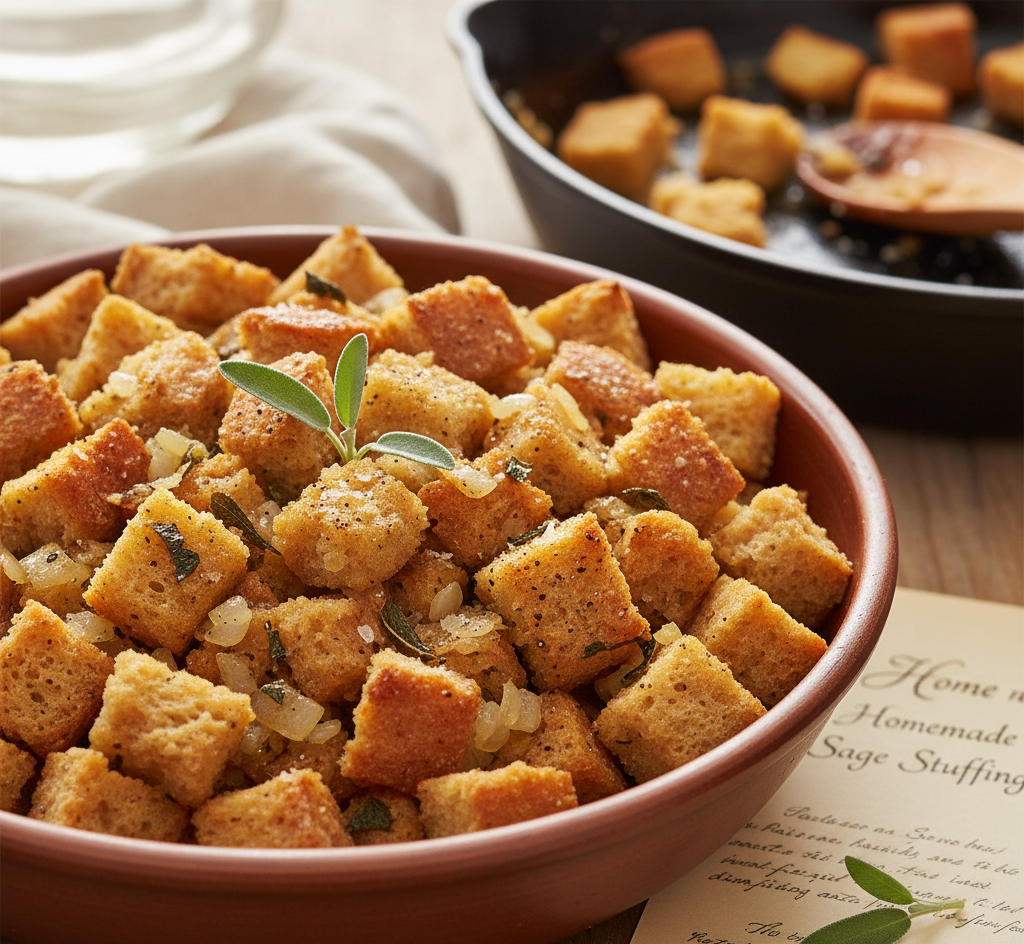
Most people remember the wonderful stuffing from their grandmother’s turkey at Thanksgiving. Whether it was the bread stuffing spiced with sage or one with the wonderful added flavor of oysters, it was a real comfort food. These days you can buy stuffing mix in a box that you can make on the stove top. It sounds great for busy people, but if you are health conscious and like to read the labels so you know what you are poking down your neck, you should take a second look. The label from a leading brand reads like a chemical dictionary. If you really like maltodextrin, monosodium glutamate (msg), high fructose corn syrup plus all the artificial coloring agents, artificial flavors, shelf life extenders, etc., then read no further, but if you are concerned about healthy eating, then keep reading and learn how with very little more effort, you can make your own home-made version, without all the “extra ingredients”.
A popular commercial dressing made on the stove top might contain all of the ingredients listed below:
- Enriched Wheat Flour (Wheat Flour Niacin Iron Thiamin Mononitrate (Vitamin B1)
- Riboflavin(Vitamin B2)
- Folic Acid
- Degermed Yellow Corn Meal
- High Fructose Corn Syrup
- Onions*
- Salt )
- Contains Less Than 2% Of Partially Hydrogenated Soybean And/Or Cottonseed Oil
- Vital Wheat Gluten
- Yeast Celery*)
- Parsley*
- Maltodextrin
- Monosodium Glutamate
- Spice
- Sugar
- Hydrolyzed Soy Protein
- Turmeric
- Cooked Chicken And Chicken Broth Annatto (Color)
- Artificial Flavor
- Natural Flavor
- With BHA
- BHT
- Citric Acid
- And Propyl Gallate As Preservatives *Dried.
If you would rather not eat the “extra ingredient” loaded dressing, then I’d suggest making your own dressing from scratch. It really isn’t that difficult, and whether you use it to stuff a turkey, or chicken, duck or goose, or use it simply as a side dish, it can be done in a few minutes:
Before starting, four tips to make the stuffing more flavorful include:
1 – Use stale bread. For some reason it gives a better flavor than fresh soft bread. It may be that in the “staling” process, some of the volatile materials which give the bread its flavor have evaporated into the air, leaving little spaces within the bread that can be refilled with the flavoring you are adding when you prepare the stuffing.
2 – Tear the bread by hand into chunks, rather than using a food processor to make smaller pieces. I’m not sure why this helps but it does seem to make the stuffing taste better. .
3 – Cook the bread pieces in the skillet after sweating the onions and/or garlic, ]rather than just mixing it with the other ingredients after it’s out of the skillet. .
4 – Add a little butter to the olive oil before cooking the onions. Even a small amount of butter will give the stuffing a flavor boost without adding the amount of “bad” unsaturated fat you would get using all butter. .
Sage Stuffing (made on the stove top) .
Ingredients: .
- 2 1/2 cups stale bread (pulled into pieces)
- 3 tbsp olive oil
- 1/2 tablespoon butter
- 1 medium onion, chopped
- 1 teaspoon ground sage
- 1/4 teaspoon salt
- 1/8 teaspoon black pepper
- 1 cup milk
Instructions:
1 – Add oil and butter to hot skillet and sauté’ the onions until translucent.
2 – Add bread pieces and cook about 1 minute more.
3 – Mix in seasonings.
4 – Slowly add milk and stir constantly until the milk is absorbed and you have a “gooey” stuffing.
Use the Sage Stuffing as a side dish or use to stuff a chicken, duck, goose, or turkey.
The Author:
Frank Ernhart
Photo. Gemini
Source: AB

